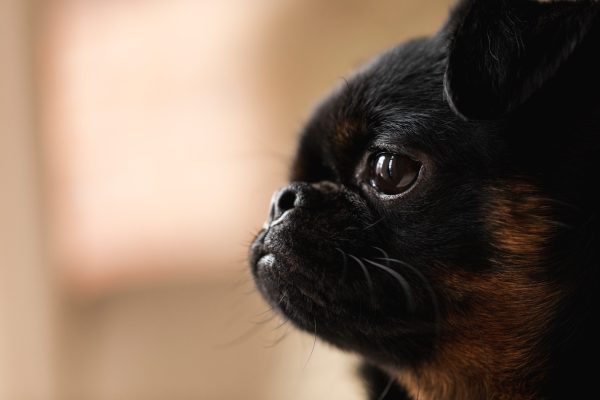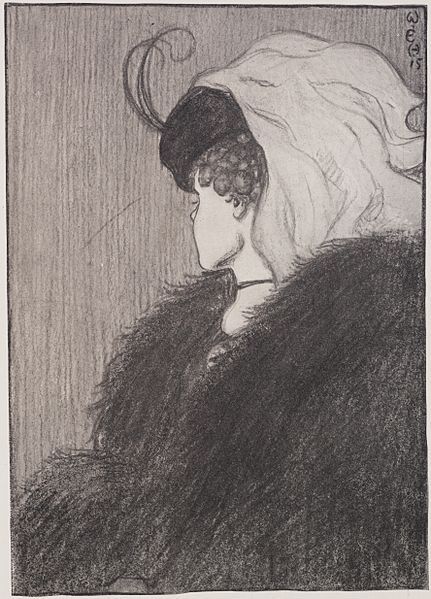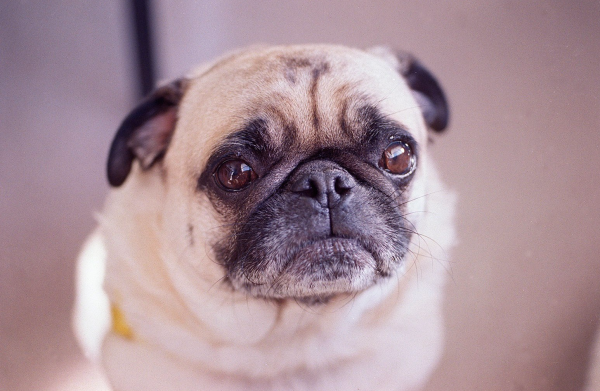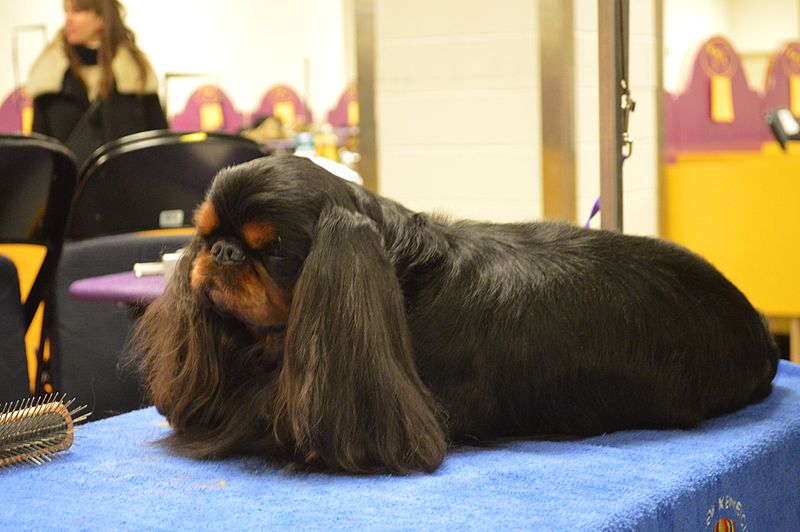
Scroll down….
Keep going….
Almost there….
You’ve probably seen the famous optical illusion we share below, the so called “Boring Figure,” created by Edwin Boring, an American experimental psychologist. Do you see a young woman or an old hag?

Boring based his drawing on one first created by William Ely Hill in 1915. Hill called his drawing, “My Wife and My Mother-in-Law” with the caption: “They are both in this picture — Find them.”

Both versions depict both an old woman looking off to the left and a young woman facing away, looking over her right shoulder. A livescience.com article from 2018 suggests that what we see first may reveal our own age, but our own experience is that whatever you see first is what you tend to always see first, and it’s hard to “unsee.”
Once again, we’ve taken a tortured path to get to the real topic of the post, the Brussels Griffon. The breed was developed in Belgium from small rough-coated dogs used as ratters in horse stables, and not for nothing was the breed known then as Griffons d’Ecurie – or wire-coated stable dog.
Like the aforementioned drawings, once you know the basic breeds that are in the ancestry of the Brussels Griffon, they are hard to “unsee” in a Griffon. While there is no actual record of the breeds that were used and then crossed, the Affenpinscher Club of America’s Illustrated Guide states that there is “no doubt that the Affenpinscher” was one of them. An Affenpinscher photo appears below. Can you see its influence in the Griffon?

Detail from a photo by Jjmarch10 is from Wikimedia Commons and is shared under the Creative Commons Attribution 3.0 Unported license.
Don’t let the Affenpinscher’s coat fool you. The influence of this breed is seen not only in Griffon’s general size, but in the wire coat texture found in the rough coated Brussels Griffon which is wiry and dense, “the harder and more wiry the better.”
Another basic breed in the Brussel’s ancestry is the Pug which gave the smooth coated Brussels its short coat. We see another similarity in their faces, don’t you?

Pug photo by Nancy Wong via Wikicommons Media and is shared under the under the Creative Commons Attribution-Share Alike 4.0 International license.
One more breed must be mentioned, and it is one that gave the Brussels its large, limpid eyes, a well rounded forehead and upturned underjaw. Can you see it?

This is Ch Loujon Thornwood Little Jacob, an English Toy Spaniel whose photo by Pets Adviser comes from www.petsadviser.com via Wikicommons Media and may have been taken at the 2015 Westminster Kennel Club Dog Show. It’s shared here under the Creative Commons Attribution 2.0 Generic license.
Facial features aren’t the ETS’s only contributions. Again, from the Illustrated Standard: “…the deep red color of the Ruby, and the black and tan of the King Charles,” acceptable colors in the Brussels Griffon.
When children appear with their parents, we can often tell that they take after their mom or dad, but often, it’s a pleasing combination of both. The Brussels Griffon is a marvelous amalgamation of the breeds we know to be in its history, and when you know what to look for, it’s hard to unsee.
Images: Photo of a Brussels Griffon is by Matthew Henry and is from the free photo site, Burst. Both versions of “My Wife and My Mother-in-Law” are from Wikipedia and are in the public domain.
